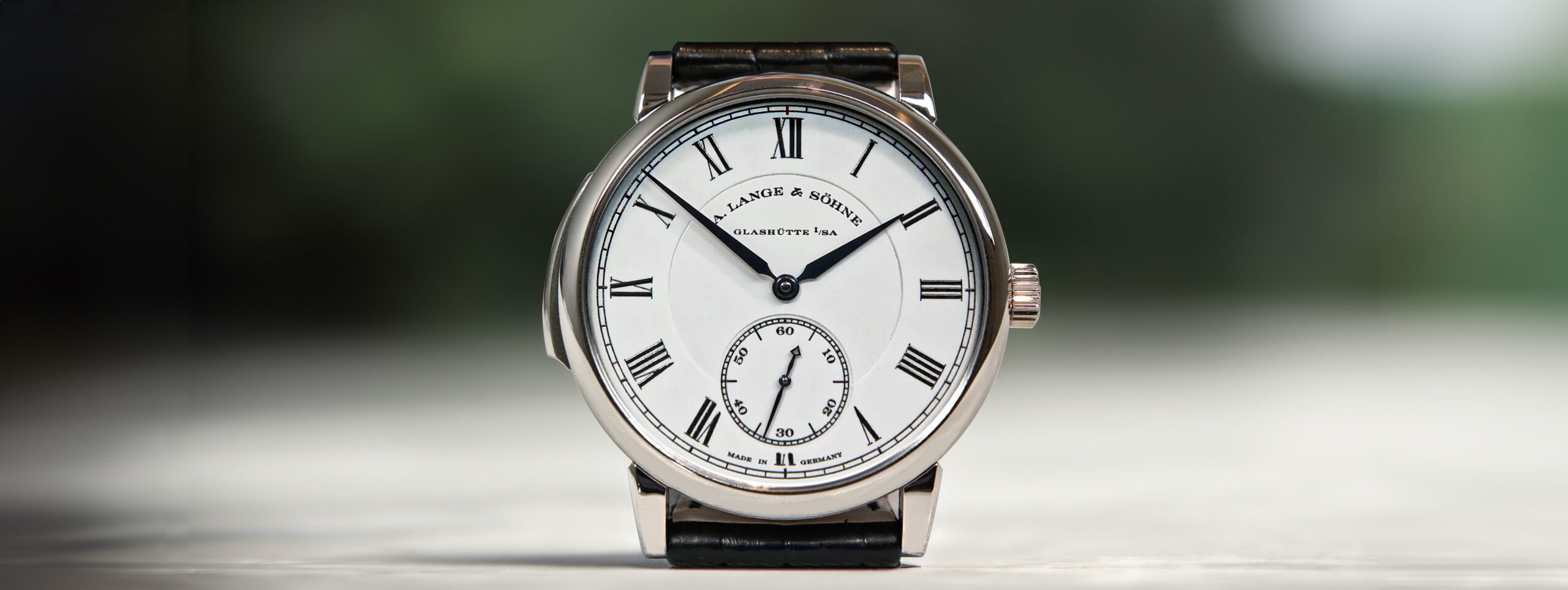
An in-depth look: Richard Lange Minute Repeater
April 2025
13 Minutes Reading Time
Back in 2015, A. Lange & Söhne had made something very, very special. Imagine a mechanical wristwatch, showcasing time not with hands but instantaneously jumping discs, every minute, without even the slightest delay. That watch was rather wearable, with a Rolex thickness, encasing a complexity that was unknown. The idea was based on a design from the pocket watch days, and A. Lange & Söhne perfected it. Now imagine as complex mechanism as a minute repeater was added onto this mechanism, with pusher, not slider activation, over its existing incredibly energy intensive complexity. To add, it was a decimal repeater. See the watch here.
Alas, to quote and paraphrase Ben Parker, with coming complexity, came the thickness, and that model never became the dear love for the market. In 2022, A. Lange & Söhne possibly said, hell with it, if the market wants a classic one, we do a classic one. This utterly classic gem, Richard Lange Minute Repeater, is A. Lange & Söhne dialing down from its exotic search and infusing the chiming complication into the Richard Lange philosophy: Showcasing time in its purest form, with basic advancements on the complication.
The philosophy stems from none-other than the namesake inspiration of the collection. The first-born son of Ferdinand Adolph Lange, Richard Lange has been instrumental for the brand’s advancement both on technical and commercial fronts from the 1880s to the early 1900s. With numerous patents on his name, one being on the alloy for balance springs which was later transformed to Nivarox, and advancements over his father’s mechanisms, to further being the chairman of the Glashütte Watchmaking School, Richard Lange is indeed an inspiration. As his works are often based on advancing the chronometry, the modern collection takes this notion at its core and grows from there. In this regard, one could say that the Richard Lange Minute Repeater, perhaps along with the Richard Lange Pour le Mérite, are the purest forms of what he would envision for a modern wristwatch.
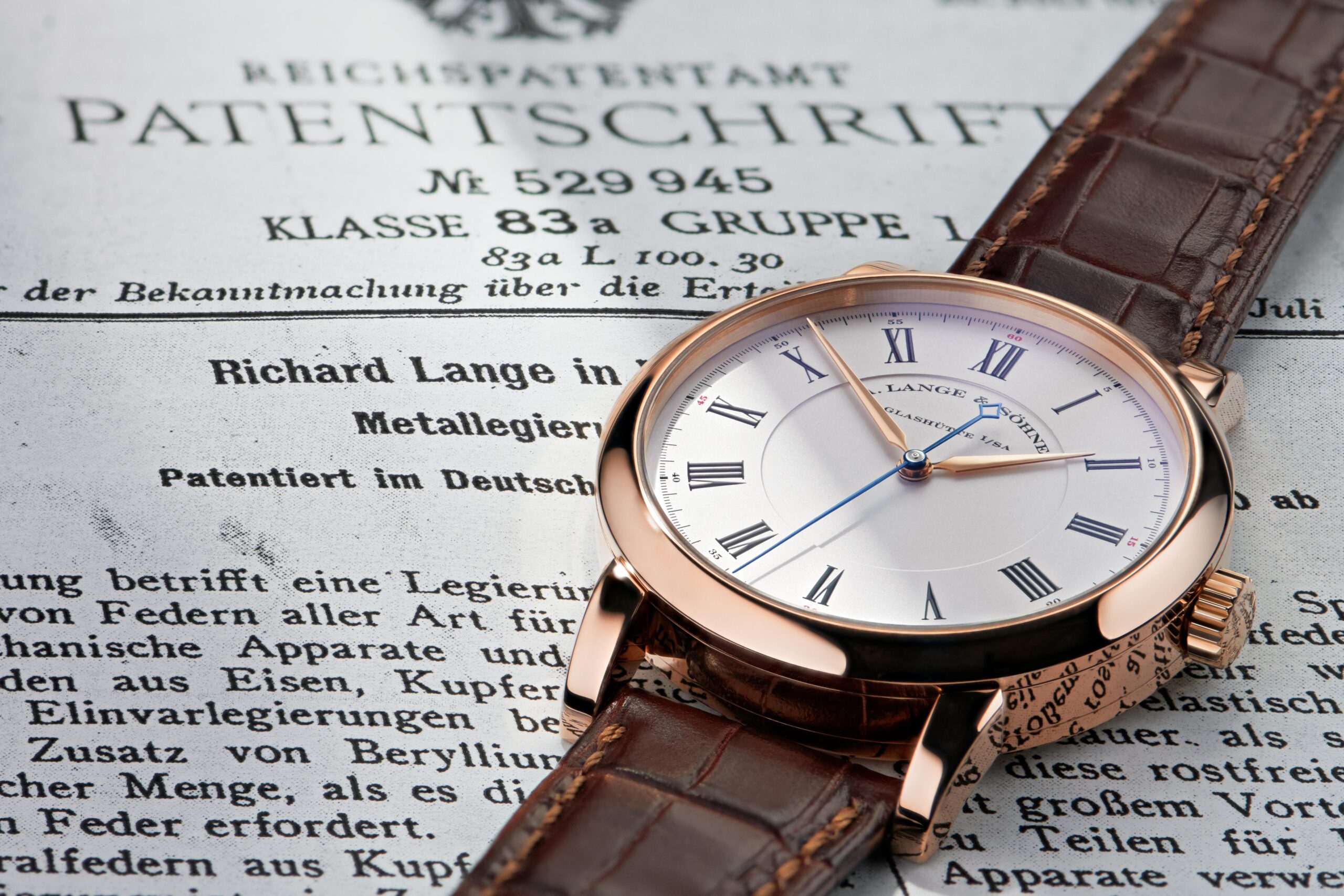
The 1932 dated patent, with a pink gold Richard Lange to match. Courtesy of Lange Uhren GmbH
Richard Lange Minute Repeater comes in a classic A. Lange & Söhne case. Three-steps as bezel, band and case back with alternating finish, polish, brush and polish, respectively. Held together by notched and soldered lugs. However, one important difference which hardcore fans would notice is that the softer curvature and the rather shortness of the lugs. One reason for that might be the superbly compact and wearable size of this gem, at 39 mm x 9.7 mm, almost without a protruding case back, hence the need for strong curvature to strap it down is less needed compared to a Datograph or an 1815 Chronograph.
The most distinct feature of course is the repeater slider. To match the case finish, the slider is also brushed on the side and given a polish on the top and bottom edges. A generous angle is provided for the ease of the sliding motion. The feeling is rather tactile, with feedback, just like how I would love it.
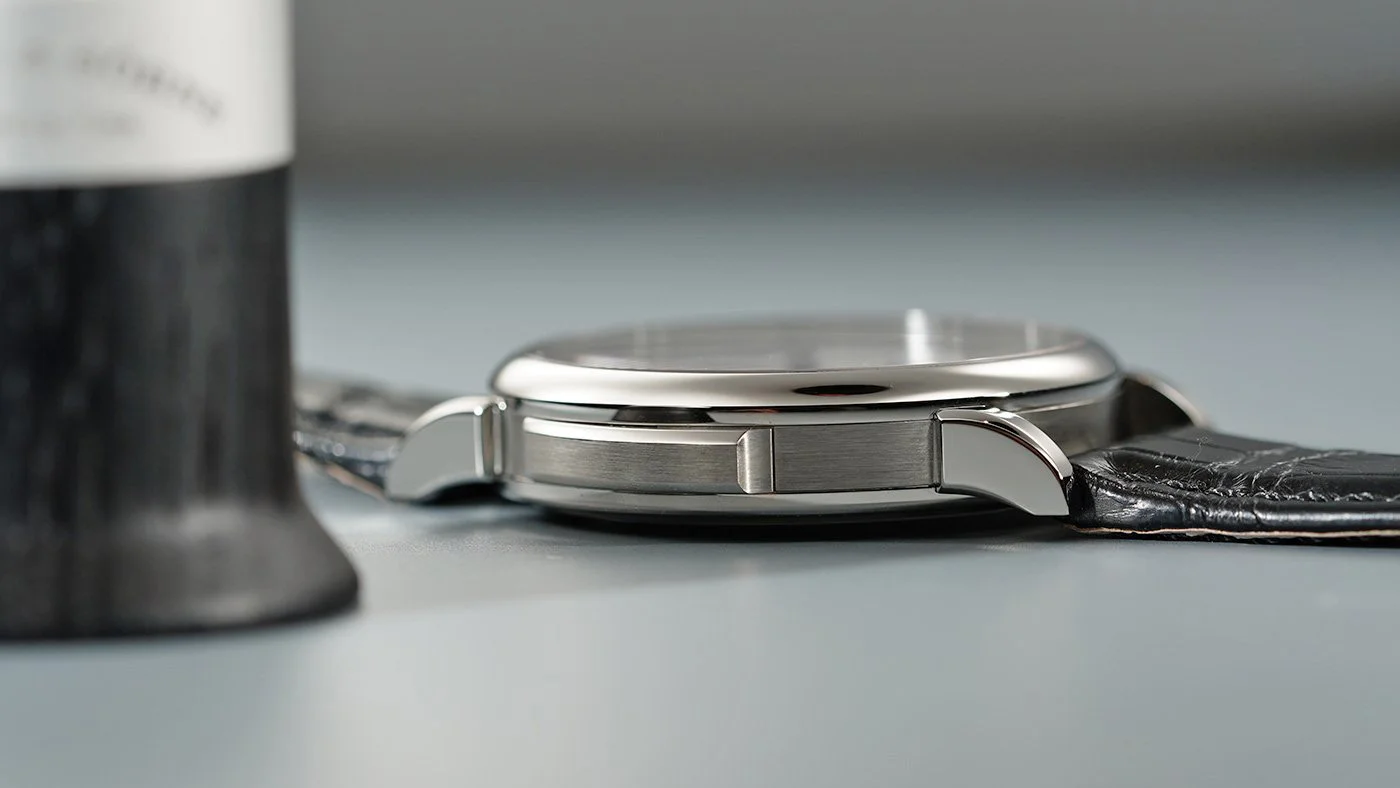
Please note the rather short and less curved lugs. Delightful profile! Courtesy of Ch24.pl.
Just like the Zeitwerk Minute Repeater, the Richard Lange Minute Repeater is water resistant to 20 meters. A rather unconventional feature for a chiming watch, as for the sound to escape, the case needs to be as open as possible – hence the reason most old-school or most of modern repeaters are only “dust protected” and are incredibly sensitive. Lange once again puts the utility forward, albeit perhaps partly sacrificing the clarity and loudness of the chimes. Audemars Piguet is another manufacture with 20 meters resistant “Supersonnerie” which I must admit, with a bit more advanced chiming performance. No surprise there though, as AP is in this business for well over a century, whereas A. Lange & Söhne is the first German to craft an in-house repeater. Please have a read about the Grand Complication of Lange to understand the roots and how AP and Lange is connected during 1890s.
Richard Lange Minute Repeater’s dial, however, carries the austerity of its case to the next level.
You might have seen it before. You know, there are those early Lange watches that are so under the radar, only a handful of them ever appear in the market, or they just change hands between the tight knit of collectors. One of them is no other than the Richard Lange Pour le Mérite with enamel dial, from 2009. A three-hand piece over a three-layer enamel dial with a fusée and chain on the back. The ultimate timekeeper, just the right piece for its namesake inspiration’s philosophy.
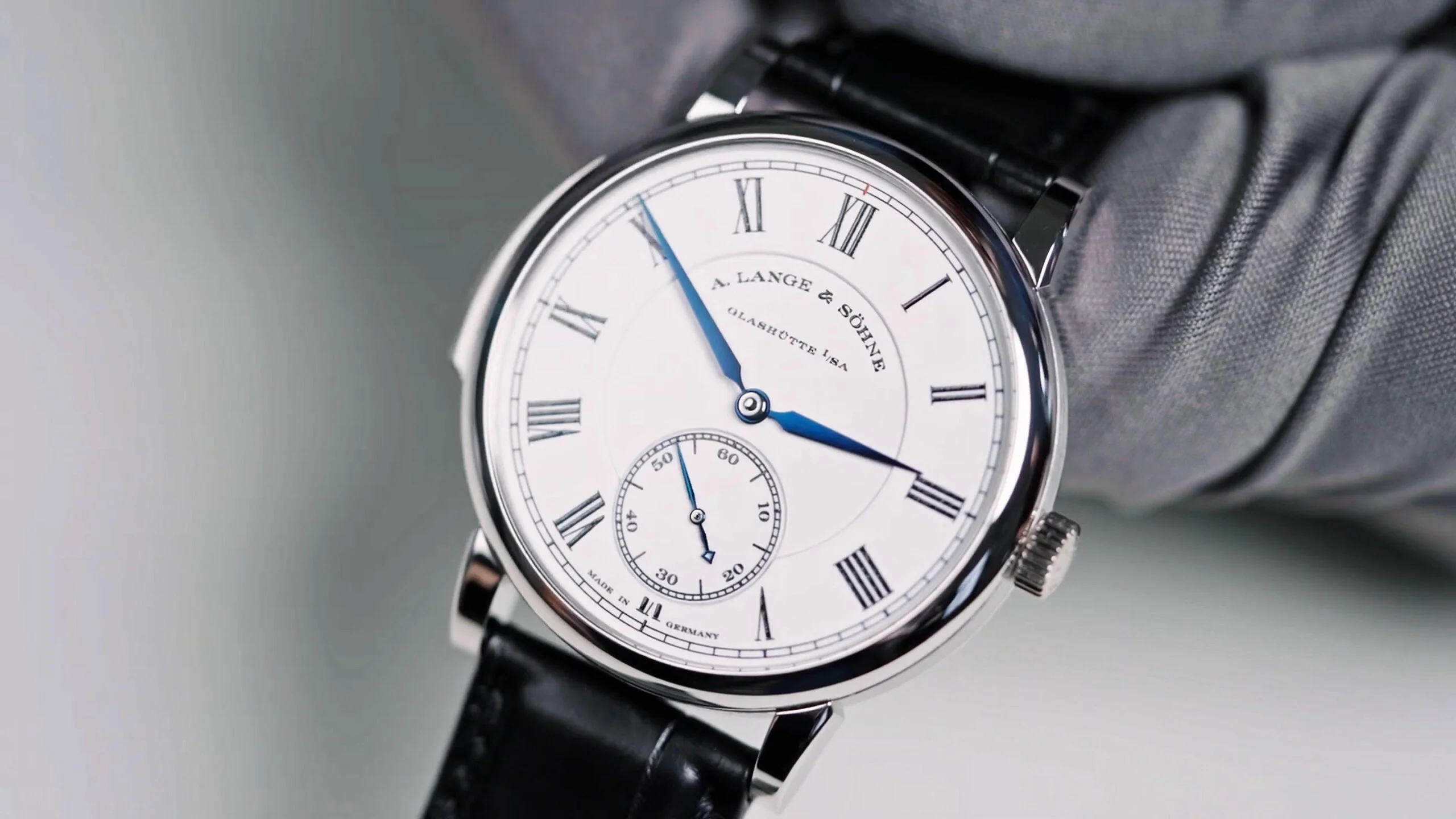
We only have a few differences for the Richard Lange Minute Repeater. The minute-track is in railway style, which is usually reserved solely for the 1815 Collection. The 15-minute markers in “red” are also omitted, further calming the dial. The remaining parts, from the proportions to the enamel painting are almost the same. Just a dial for you to read the time at its simplest form. Just a soothing companion on the front to contrast the utter complexity at the back.
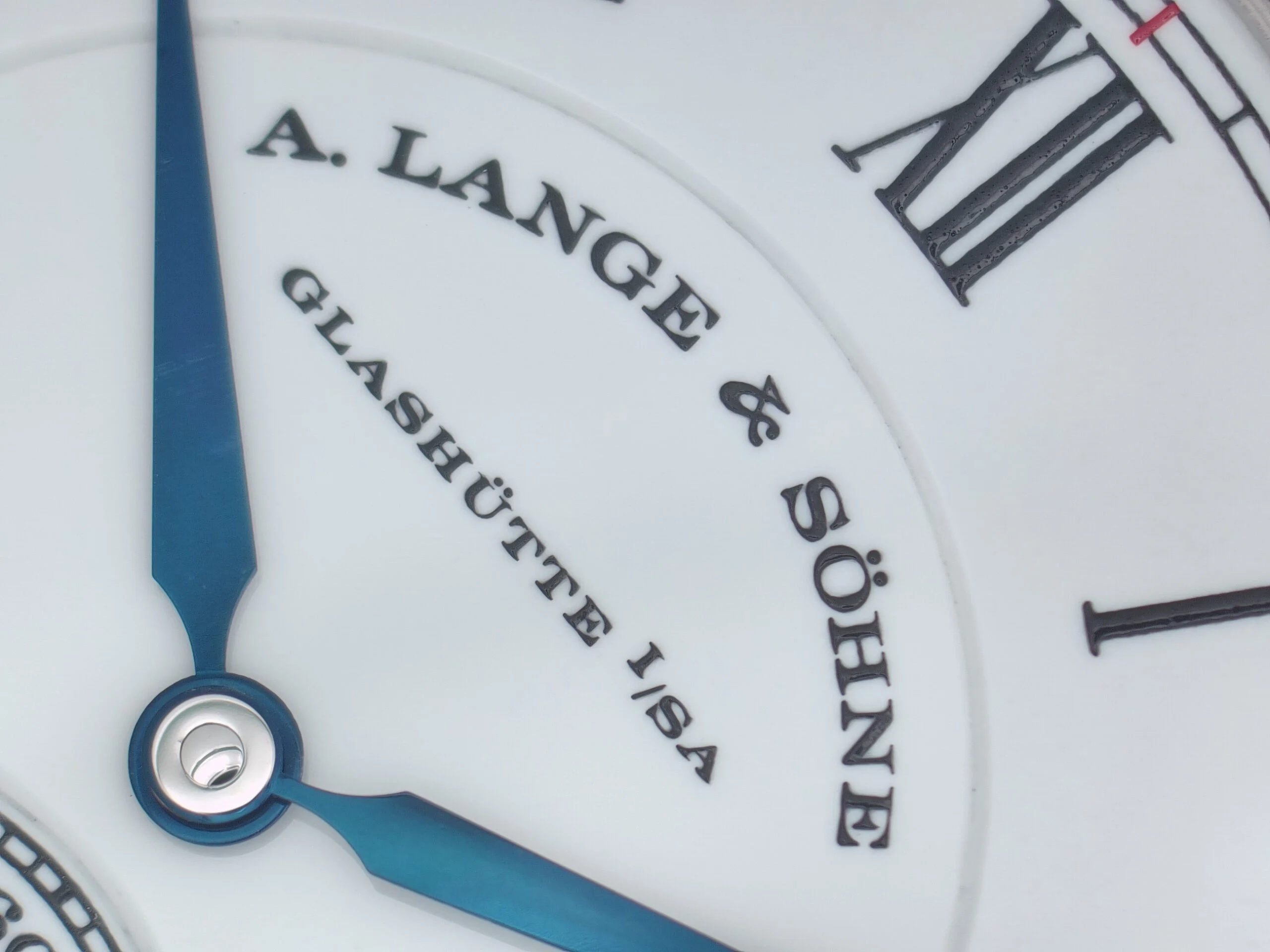
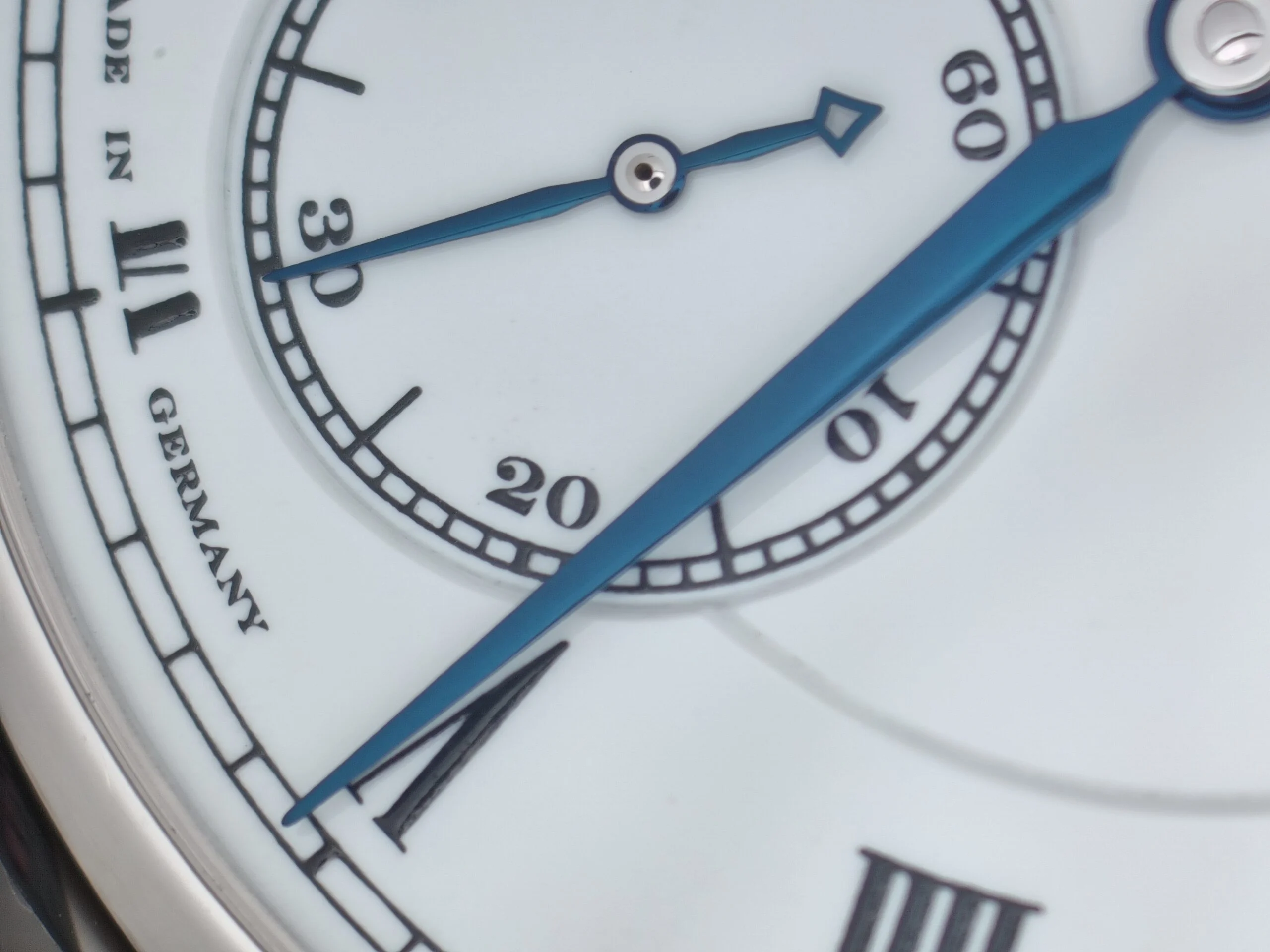
Following the Zeitwerk Minute Repeater, you can see that the brand just chose the opposite way – a natural evolution per sé. Also a rather direct response to the competition.
The Quietest Lange, Until Given a Voice
The Richard Lange Minute Repeater is a thoroughly conventional minute repeater. I can confidently say that A. Lange & Söhne dialed down (not only in aesthetics) complexity. While the Zeitwerk Minute Repeater was a decimal repeater, chiming 10 minutes allowing you to hear time as you read it, Richard Lange Minute Repeater chimes quarters. Of course, all this adjustment and lack of Zeitwerk’s discs help keeping the Richard Lange’s thickness at 9.8 mm only.
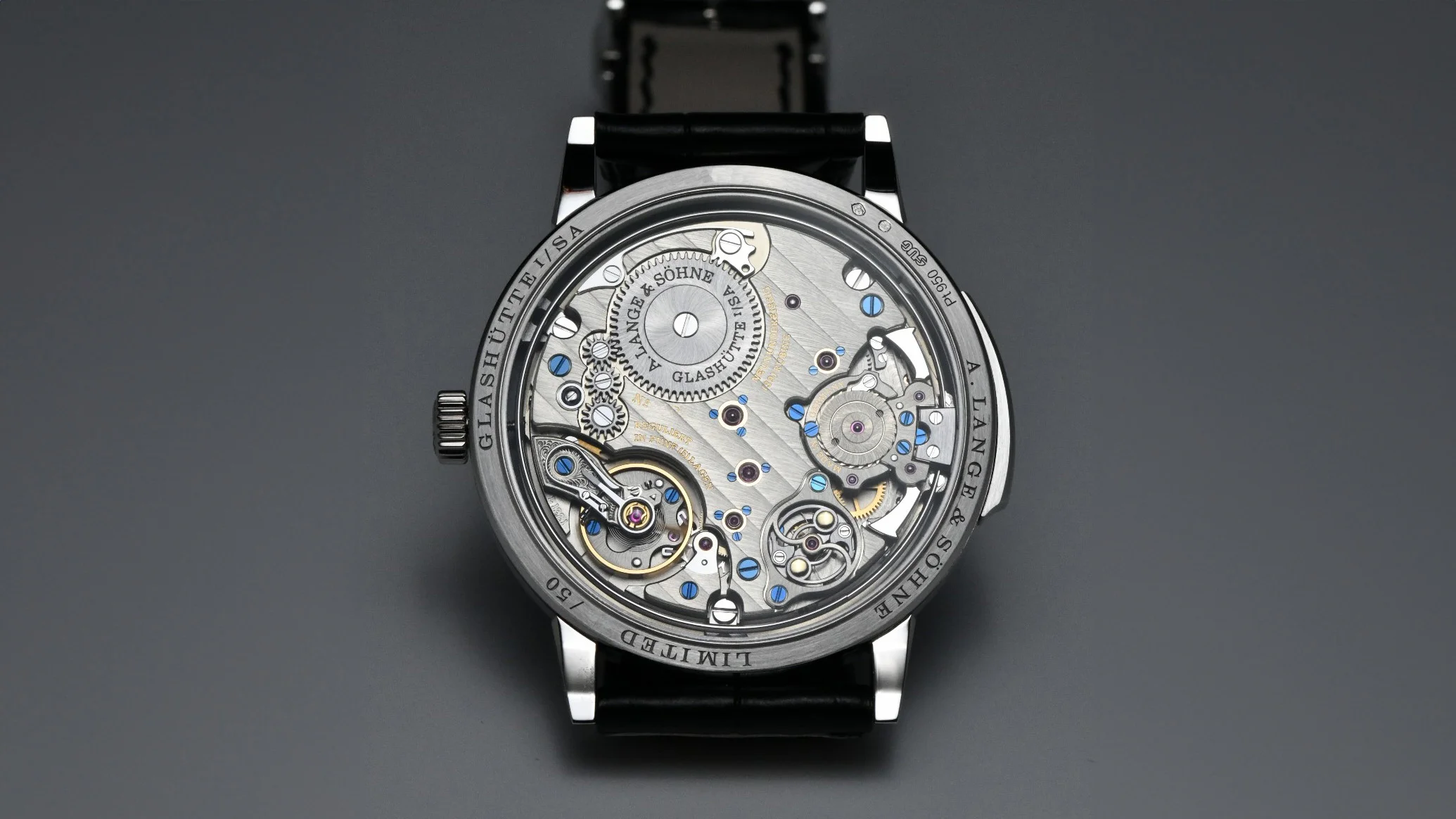
So how does this work?
When the slider is activated, it engages the mainspring specifically devised for the repeating mechanism. The sliding motion is basically winding up this spring to power the striking mechanism. As the slider moves, the repeater mechanism reads the time via the snails. These parts represent the current position of the hour, quarter hour, and the minute hands.
Lever arms rest against the snails, determining exactly how many strikes are needed to represent the time. The snails essentially “store” the current time’s information. After the slider is fully activated and released, the repeater mechanism begins its automatic chime sequence. A series of racks (toothed segments) and cams are released and guided by the snails’ positions, which have already encoded the time. After the slider is released, the power is transferred to the hammers to chime on steel gongs, while their pace is adjusted via the centrifugal governor.
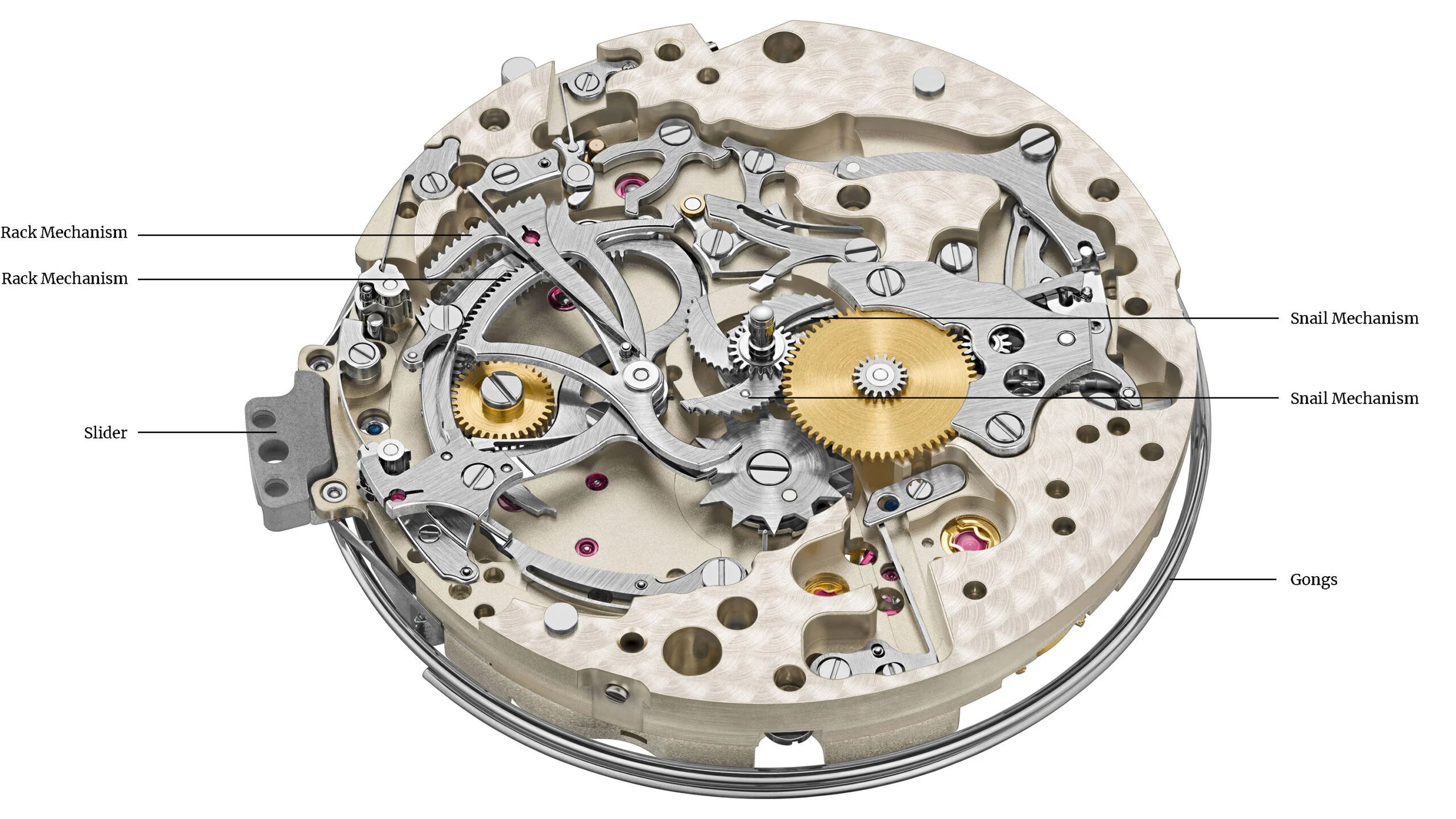
Albeit some of the parts are not seen, you can have a general idea. Please visit Grand Complication to understand it fully.
It is surely much easier to tell than assembling one, though. With the experience garnered from the earlier minute repeaters, the Richard Lange Minute Repeater is assembled within the Zeitwerk department. The assembly rests on the shoulders of only two watchmakers, making only one in every month or two. See, the repeater or Sonnerie sequences require tiniest and very active parts to be first machined and then adjusted and assembled to the smallest tolerances. Along the way, the watchmaker must do manual adjustments, set the tone and clarity as best as possible, which is an incredibly delicate work.
An interesting element is the centrfigual governor. The patent on the mechanism goes back to late 1800s to C. Barbezat Baillot. It is comprised of basically 4 elements:
- Central axis pivot
- Governor arms (arranged symmetrically)
- A Spring Mechanism attached between arms and levers, pushing these elements towards the center, maintaining the resting position
- Housing, which the mechanism rests inside of a circular recess, acts as a friction element when needed
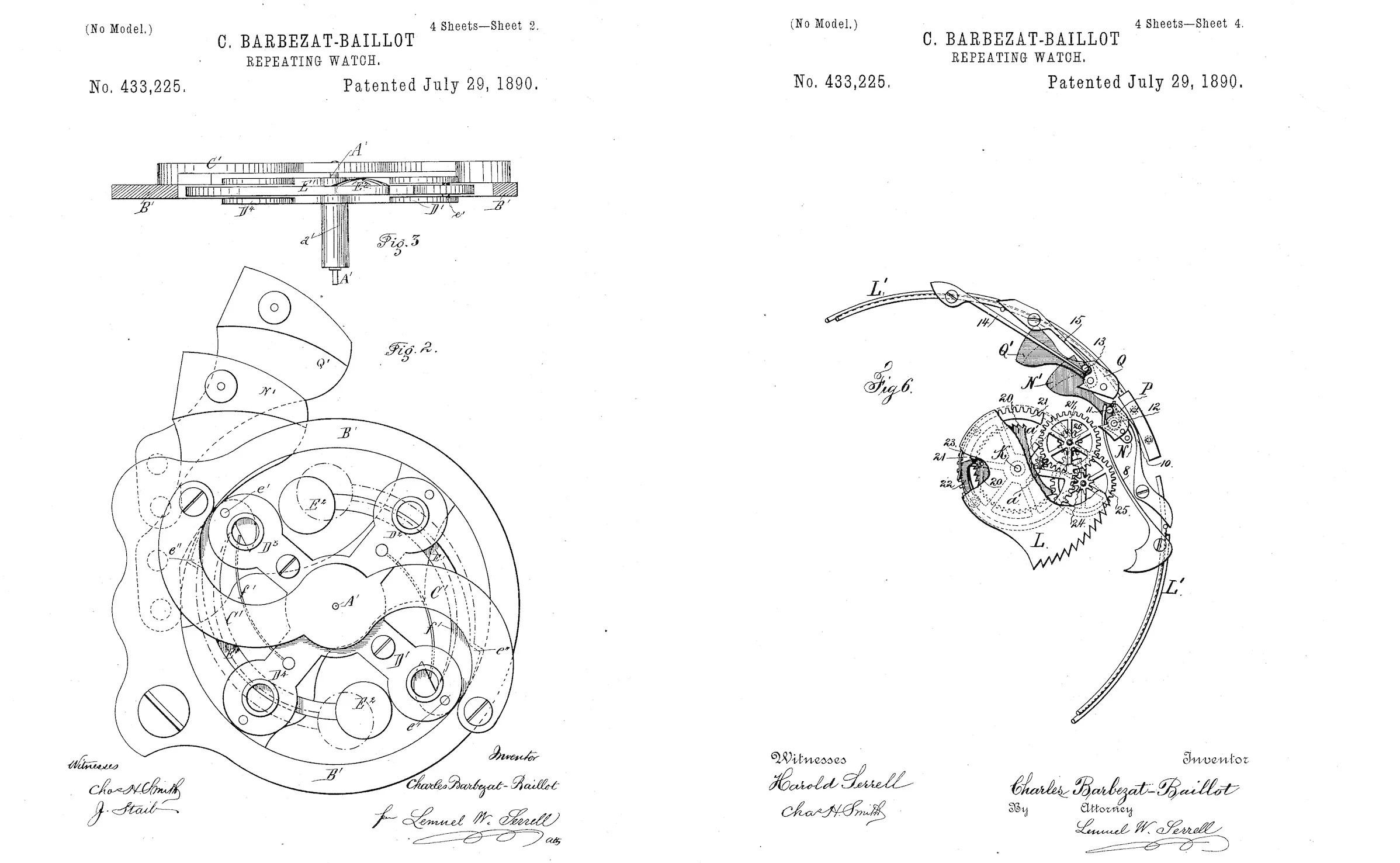
It was devised to overcome the buzzing or clicking sounds made by earlier, escapement based chiming mechanisms. This is the fundamental principle of all the minute repeater mechanism’s pacing. We can see that even in 2008, Christophe Claret quotes this very patent for his advancement on the chiming mechanisms.
In essence, When the repeater is activated, the governor starts rotating at a speed proportionate to the repeater’s mechanical energy (supplied by its dedicated mainspring). At lower speeds (initially or under minimal load), the springs keep the weighted levers close to the axis, and thus, the governor rotates freely, encountering no frictional resistance. As rotational speed increases, centrifugal force pushes the weighted levers outward against the inward pull of the springs. When a certain critical speed is exceeded, these levers move outward, causing their specially shaped heels to meet the stationary recess wall, producing controlled friction. When the governor slows down to an acceptable speed, the centrifugal force lessens, allowing the springs to retract the levers back to their normal inward position. Consequently, the friction is released, restoring free rotation.
All these movements are automatic, hence ensuring that the strikes are uniformly spaced and paced, unaffected by torque. One problem, however, has always been that buzzing sound when the repeating sequence initiates. You know, that hissing sound behind the glorious tones of strikes… Well, not with A. Lange & Söhne. The Saxon, once again, advances the fundamentals of a complication, solving a problem that not many people even considered a problem, before it was solved. We seen attempts on it before, with the Vacheron’s Patrimony Minute Repeater for example, yet surely not executed at this level of excellence.
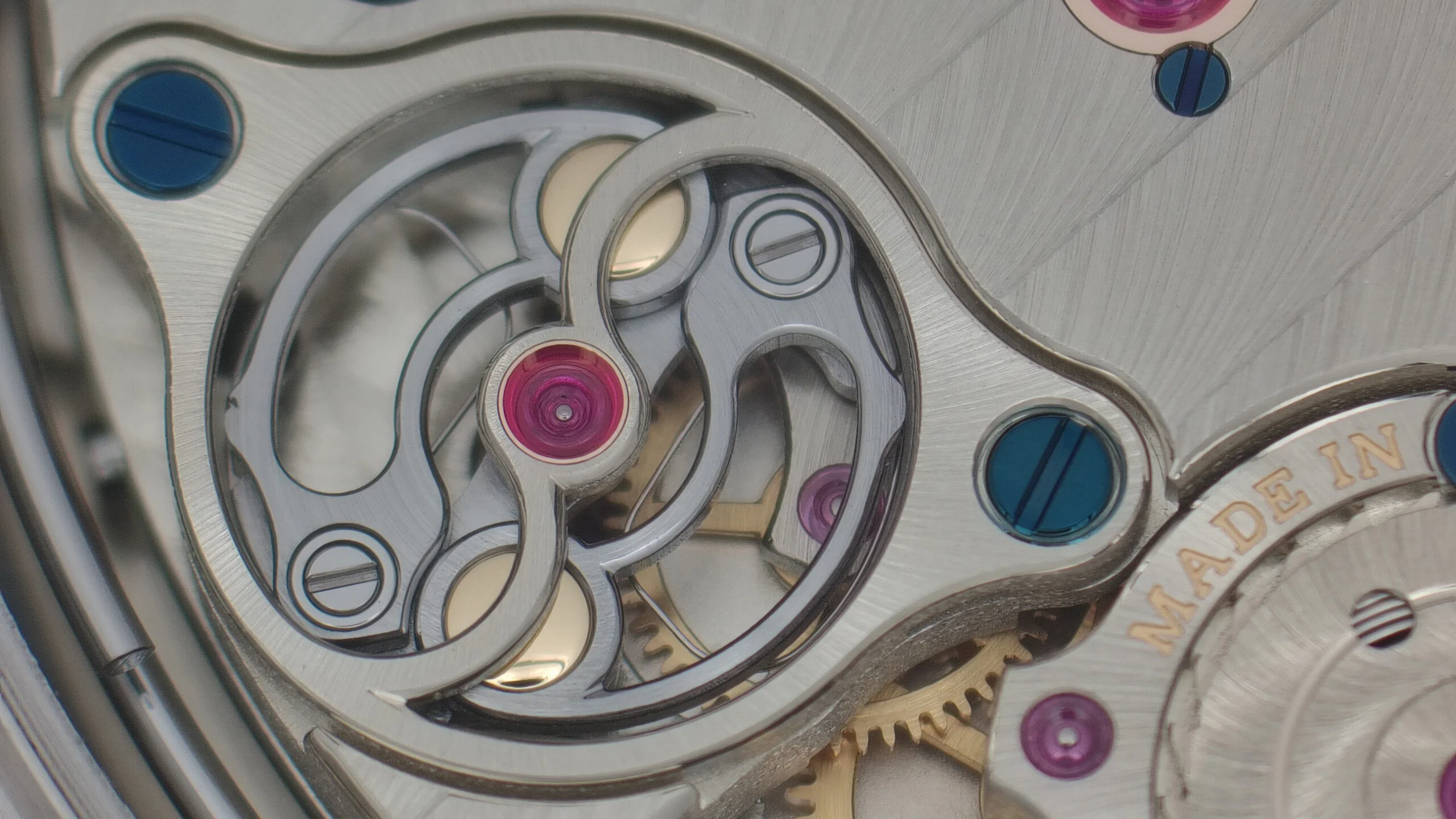
Richard Lange Minute Repeater’s centrifugal governor operates extremely quietly. Unfortunately, I could not learn the quirk or device behind such a unique operational quality, yet, the result is there. Albeit the prototype introduced during Watches & Wonders was rather underwhelming, both in sound quality as well as the buzzing sound, the production pieces are far more advanced on every base.
One final detail that I immensely enjoy is the balance spring with a Breguet terminal curve. In its first couple years, A. Lange & Söhne was utilizing this element over Lange 1s, Saxonias, etc. and unfortunately ditched the practice in the coming years, possibly due to the expertise and time needed to properly adjust the spring. We saw a resurrection once again in the Richard Lange collection. That was surely not a coincidence. One of the most important patents secured by Richard Lange himself was the addition of Beryllium to balance spring alloys, which later gave birth to Nivarox.
There was an early discussion at the purists Lange forum back then, between Walt Odets and Peter Chong about why A. Lange & Söhne did not incorporate the Breguet Overcoil to Datograph – which seemingly was excused from any shortcuts. Walt Odets make very strong arguments over the traditional as well as practical importance of the craft. Hence, it is delightful to see the feature on Richard Lange Minute Repeater, a watch that is only about time keeping, and showing it in the most delightful way.
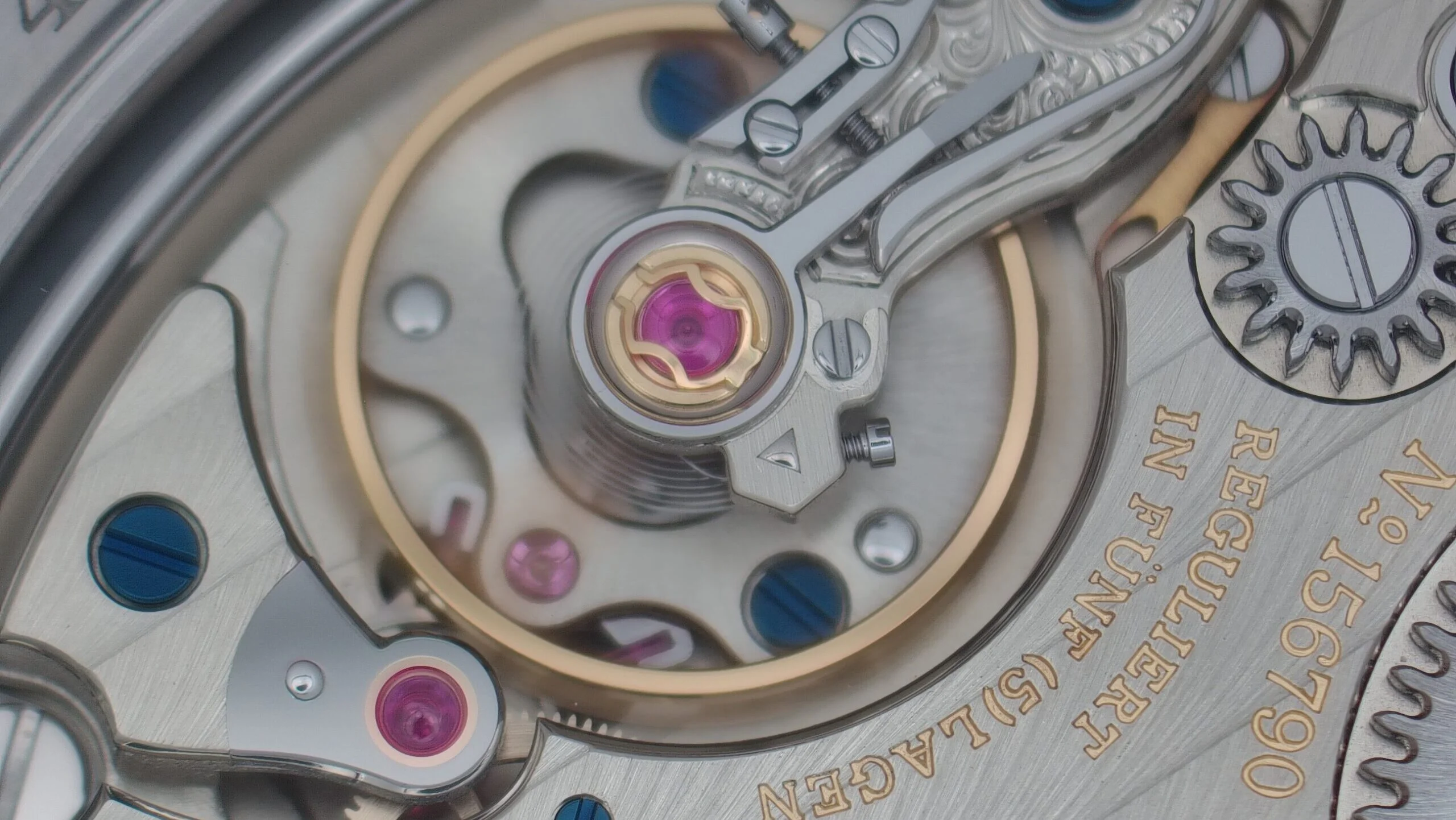
Then, there is finishing.
A myriad of sharp angles, a ribbing and solarization as uniform and smooth as a bird’s feathers, generously endowed chatons secured with blued screws, black polished hammers and a German watchmaking twist on the repeater movement architecture…
Especially the governor is given quite the attention with almost flawless anglagé, striping and overall work on its arms as well as its jewelled bridge. The balancing two gold weights add further to the delightful colors over the German Silver plate. The activation of the repeater is a joy with that classic tactile Lange feeling, and the silent spin powering the hammers’ sequence is the cherry on top. No hissing, buzzing, just pure, beautiful tones. Oh, also no pauses if the quarter hours are not struck. Another one of those problems that you know, but does not bother you until it is solved. Audemars Piguet later devised a similar mechanism in 2023 with the Royal Oak SuperSonnerie.
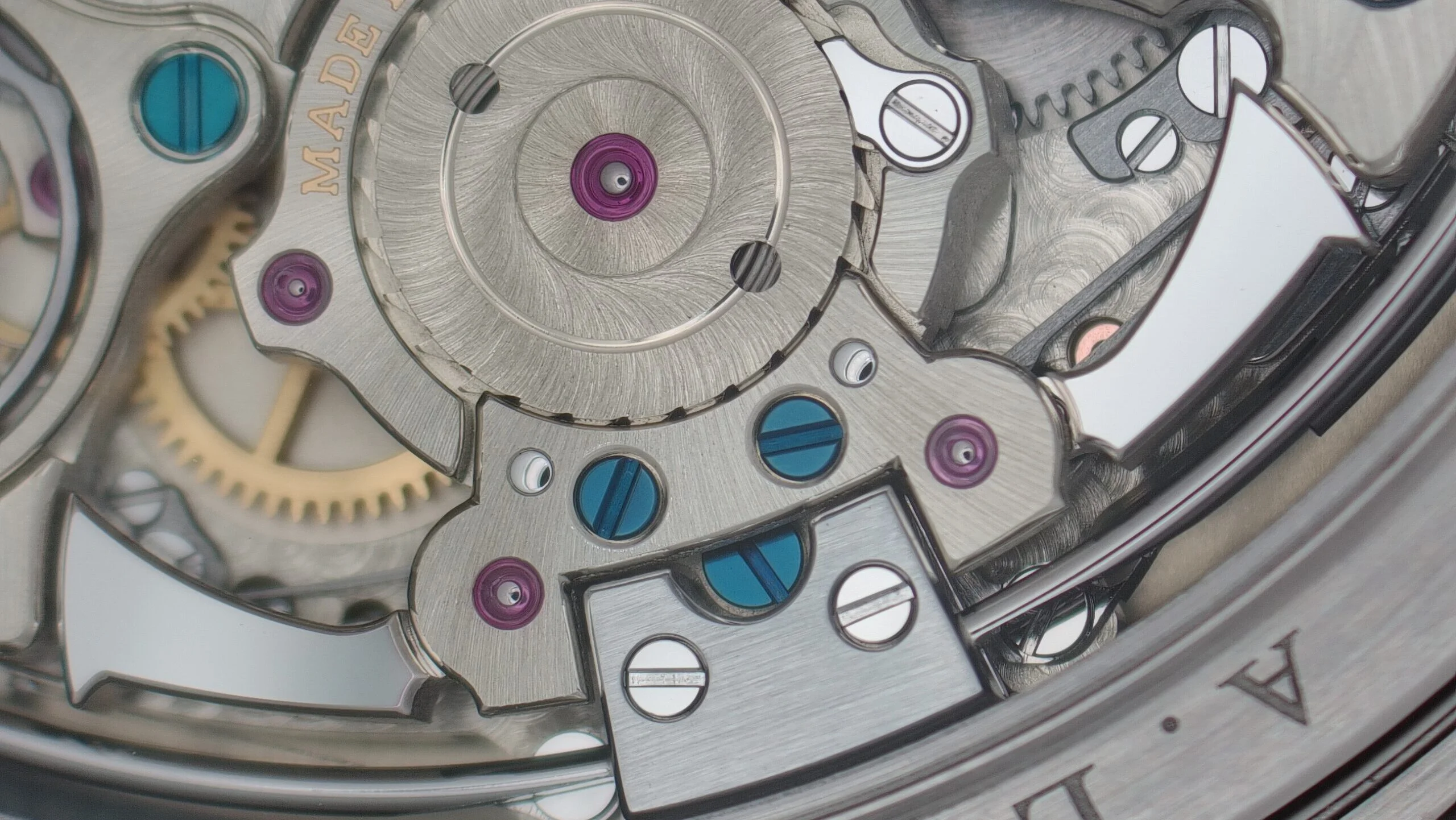
Even under the dial, which you need to lift the sublime three-part enamel dial, the repeating works are beautifully finished. As is the beauty of classical watchmaking… A great idea can be built around this. I encourage every owner of these 50 pieces limited gem to ask Lange a manufacture visit whenever they send their pieces for service. Because only then you can observe the magnificent works under the silent face.
Lastly, the sound:
The intensity, the pacing, the tonality is the best A. Lange & Söhne I have ever seen. Albeit in a platinum case, the tones are full and the difference is well defined. I would happily say that the Richard Lange Minute Repeater is up there with the likes of Patek Philippe, Audemars Piguet and Vacheron Constantin, allowing me to say that A. Lange & Söhne is closing / has closed one another gap with manufactures who have centuries of experience in chiming watches.
The price in 2022 was €409k, and to my knowledge, was not updated significantly in the coming two years. As happens with these kind of watches, the deliveries are spanned over a few years. Of course, the natural competition are with the brands above, but I also would like to add the Credor Spring Drive Minute Repeater there. What an incredible piece that is, almost as a counter-thesis to the Richard Lange Minute Repeater, but equally tickles the watch enthusiast’s heart. Or Chopard’s sapphire Minute Repeater…
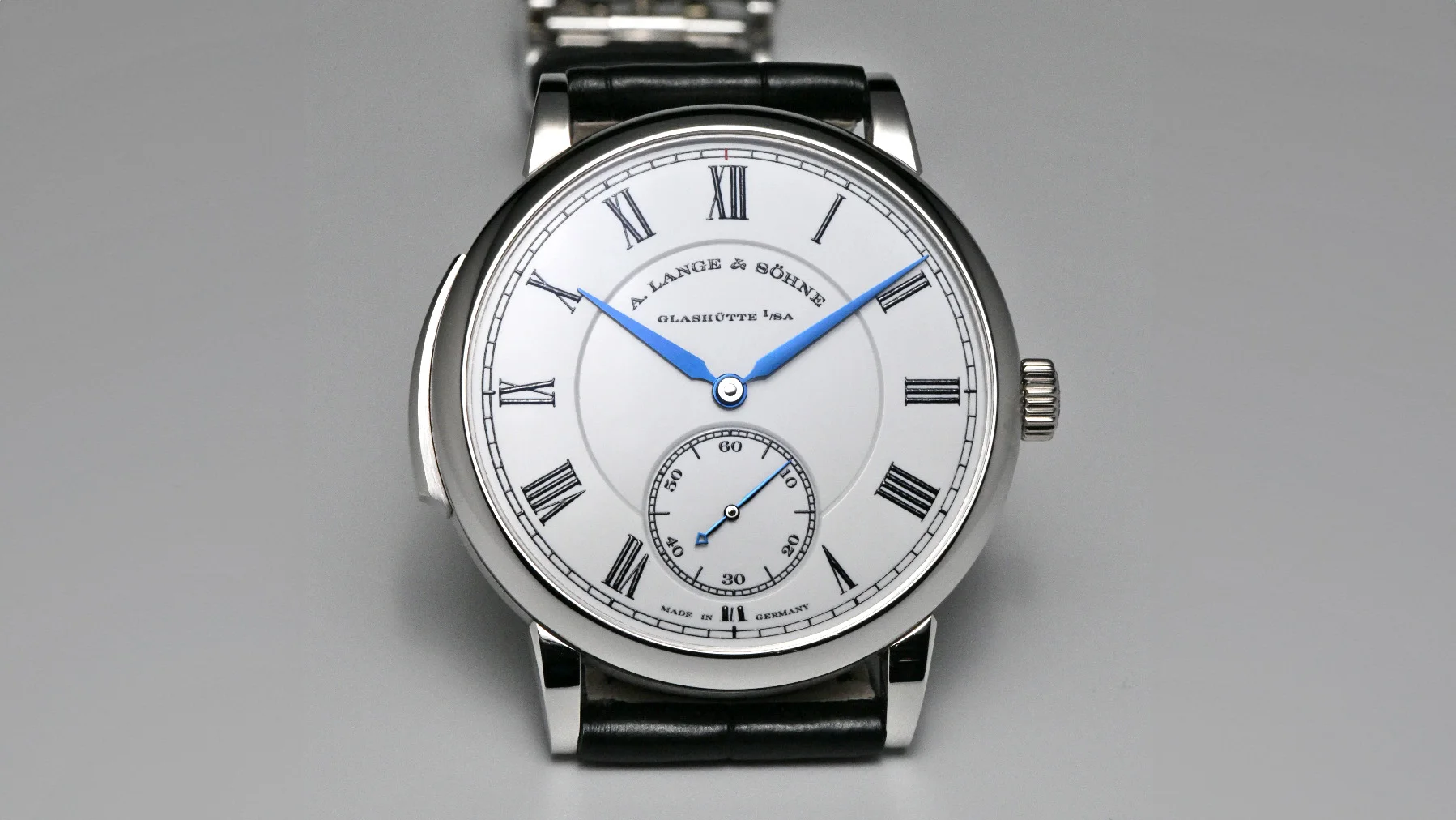
Just pure Richard Lange Minute Repeater. From the popping blue, to brilliant enamel to sophisticated paint.
It is egregious to call any of these pieces a bargain, though I feel compelled to say among the Minute Repeater universe, the Richard Lange Minute Repeater feels like one! I doubt it is going to have a strong pre-owned market, though. The competition is simply too intense for the selection.
Plus: I feel, someday, there is going to be a a Lumen(esque) treatment on the Richard Lange Minute Repeater. A sapphire dial is one of the best treatments of a chiming watch can get, as demonstrated by Audemars Piguet or Patek Philippe. The exposure of the snails, cams, and the whole repeating mechanism delivers a watch joy a few others can match, allowing the owner to just observe the finest of watchmaking when that repeater slide is released.
I hope this was a valuable guide for who considers this gem, and an enjoyable adage to those who are lucky to own it already!
I would like to extend my sincerest gratitude to a collector extraordinaire and a dear friend, @polinoir, for his most valuable photography in help of creating this article.
Please feel free to contact:
Follow Langepedia on Instagram:
Watch “A. Lange Story” Documentary, in partnership with The 1916 Company:
STAY IN TOUCH
Sign up for the newsletter to get to know first about rare pieces at Marketplace and in-depth articles added to the encyclopedia, for you to make the most informed choice, and first access!